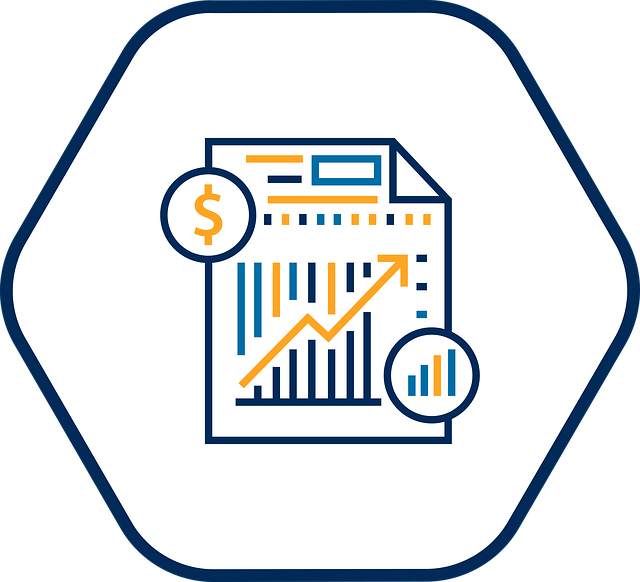Understanding and managing cash flow is crucial for businesses. Start by tracking income and expenses over a month to detect patterns, categorize spending, and identify areas for savings. Differentiate between fixed and variable costs to target reductions in the latter. Create a realistic budget based on income, fixed expenses, variable costs, and savings goals. Regularly review and adjust this budget using automated tools, open communication, and variance analysis to proactively address cash flow problems.
Struggling with cash flow issues? You’re not alone. Many businesses face challenges managing their finances effectively. This article is your comprehensive guide to improving cash flow through powerful budgeting strategies. We’ll walk you through understanding your current financial situation, identifying areas for improvement, creating a realistic budget, implementing strategies for adherence, and regularly monitoring adjustments. By the end, you’ll be equipped to pinpoint and resolve cash flow problems once and for all.
- Understanding Your Current Cash Flow: Tracking and Analyzing Expenses
- Identifying Areas for Improvement: Cutting Unnecessary Costs
- Creating a Realistic Budget: Allocating Funds Wisely
- Implementing Budgeting Strategies: Tips for Adherence and Success
- Monitoring and Adjusting: Regular Reviews for Optimal Cash Flow Management
Understanding Your Current Cash Flow: Tracking and Analyzing Expenses

Understanding your current cash flow is a crucial step in identifying cash flow problems and implementing effective solutions. Start by tracking all income sources and expenses over a set period, typically a month. This involves meticulous record-keeping of every transaction, from regular bills to one-off costs. By analyzing these records, you gain valuable insights into where your money is going. Identify fixed expenses like rent or loans, which remain consistent, and variable expenses such as groceries or entertainment, which can fluctuate.
This process allows you to categorize your spending, detect unusual patterns, and pinpoint areas for potential savings. For instance, you might discover excessive spending on non-essential items or recognize opportunities to negotiate better rates with service providers. Once you have a clear picture of your cash flow dynamics, you’re equipped to make informed decisions about budgeting and allocating resources, which can significantly improve overall financial health.
Identifying Areas for Improvement: Cutting Unnecessary Costs

Many businesses struggle with identifying cash flow problems, but cutting unnecessary costs is a powerful way to turn this around. Start by thoroughly reviewing your expenses and categorizing them into fixed and variable costs. Fixed costs are those that remain consistent regardless of production or sales levels, such as rent, salaries, and insurance. Variable costs change based on business activity, like raw materials, inventory, and marketing expenses.
By identifying areas where you can cut back on variable costs, you can significantly improve your cash flow. This might include negotiating better terms with suppliers, reducing inventory by implementing just-in-time stock management, or even simplifying your pricing structure to increase profit margins. Remember, every dollar saved contributes to a healthier cash flow position.
Creating a Realistic Budget: Allocating Funds Wisely

Creating a realistic budget is a powerful tool for identifying and addressing cash flow problems head-on. It involves a careful analysis of your income, fixed expenses (like rent or mortgage), variable costs (groceries, entertainment), and savings goals. Start by gathering all relevant financial information for a specific period, typically a month. This data will help you allocate funds wisely across different categories, ensuring that your budget reflects your actual spending habits and priorities.
Once you have a clear picture of where your money goes each month, prioritize payments for essential expenses first. Allocate enough funds to cover these obligations fully and on time. Then, consider your savings goals—whether it’s building an emergency fund or investing for the future. The remaining budget can be allocated to discretionary spending, but remember that even entertainment and leisure activities should align with your financial stability and long-term objectives.
Implementing Budgeting Strategies: Tips for Adherence and Success

Implementing effective budgeting strategies is a game-changer when it comes to improving cash flow, but ensuring adherence can be challenging. Start by setting clear and realistic financial goals aligned with your business objectives. Break down your budget into categories relevant to your operations, such as fixed costs, variable expenses, and revenue projections. This structured approach helps in identifying cash flow problems early on.
Regularly reviewing and adjusting your budget is crucial for success. Utilize budgeting tools or software to automate the process, making it easier to track spending and stay within allocated limits. Encourage open communication among team members responsible for different expenses to foster accountability. Periodically analyzing variances between actual and projected costs can provide valuable insights, helping you make informed decisions to optimize cash flow management.
Monitoring and Adjusting: Regular Reviews for Optimal Cash Flow Management

Regularly reviewing your budget is essential for identifying cash flow problems early on and making necessary adjustments to keep your finances on track. Set aside dedicated time each month—say, at the start or end—to analyze where your money is going. Compare actual expenses against your projected figures from the initial budgeting phase. This process will highlight any discrepancies and areas where you might be overspending or falling short.
By doing these regular checks, you can swiftly make changes to curb unnecessary costs, negotiate better rates with service providers, or even explore alternative revenue streams if needed. Staying proactive in this regard ensures that your budget remains a living document—adaptable and responsive to the dynamic nature of your financial situation.
